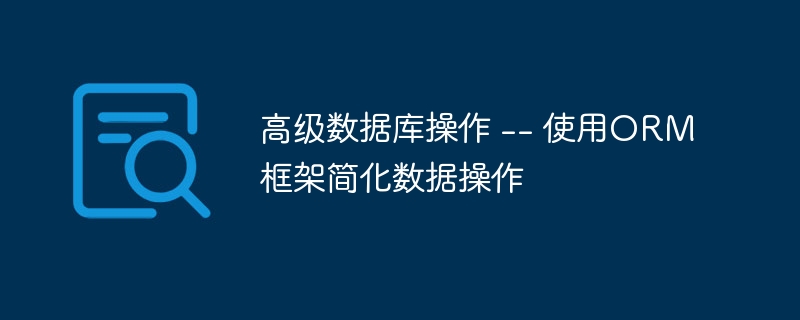

Advanced database operations--use ORM framework to simplify data operations
Introduction:
In modern software development, data storage and operation are crucial task. The traditional database operation method requires manually writing a large number of SQL statements, which is not only cumbersome but also error-prone. In order to simplify database operations and improve development efficiency, the ORM (Object-Relational Mapping) framework came into being. The ORM framework can map the table structure in the database to objects in the programming language, allowing developers to add, delete, modify, and query the database through objects. This article will introduce the concept of ORM framework, common ORM frameworks and how to use ORM framework to simplify data operations.
1. The concept of ORM framework
ORM (Object-Relational Mapping) framework is a framework that manages the mapping relationship between relational databases and objects. It maps the table structure in the database into objects in the programming language, allowing developers to operate the database in an object-oriented manner. The ORM framework greatly simplifies the development of the data layer, reduces dependence on SQL, and improves development efficiency.
2. Common ORM frameworks
3. Use the ORM framework to simplify data operations
Using the ORM framework for database operations has many advantages over manually writing SQL statements. The following takes Hibernate as an example to introduce how to use the ORM framework to simplify data operations.
4. Summary
By using the ORM framework, developers can operate the database in an object-oriented manner, which greatly simplifies the development of the data layer. The ORM framework can automatically generate SQL statements, provides high flexibility and customizability, and can adapt to different project needs. This article introduces the concept of ORM framework, common ORM frameworks, and the steps to use ORM framework to simplify data operations. In actual development, choosing an appropriate ORM framework and rationally utilizing the functions it provides will improve development efficiency, reduce code complexity, and achieve the goal of advanced database operations.
The above is the detailed content of Advanced database operations -- Simplify data operations using ORM framework. For more information, please follow other related articles on the PHP Chinese website!




